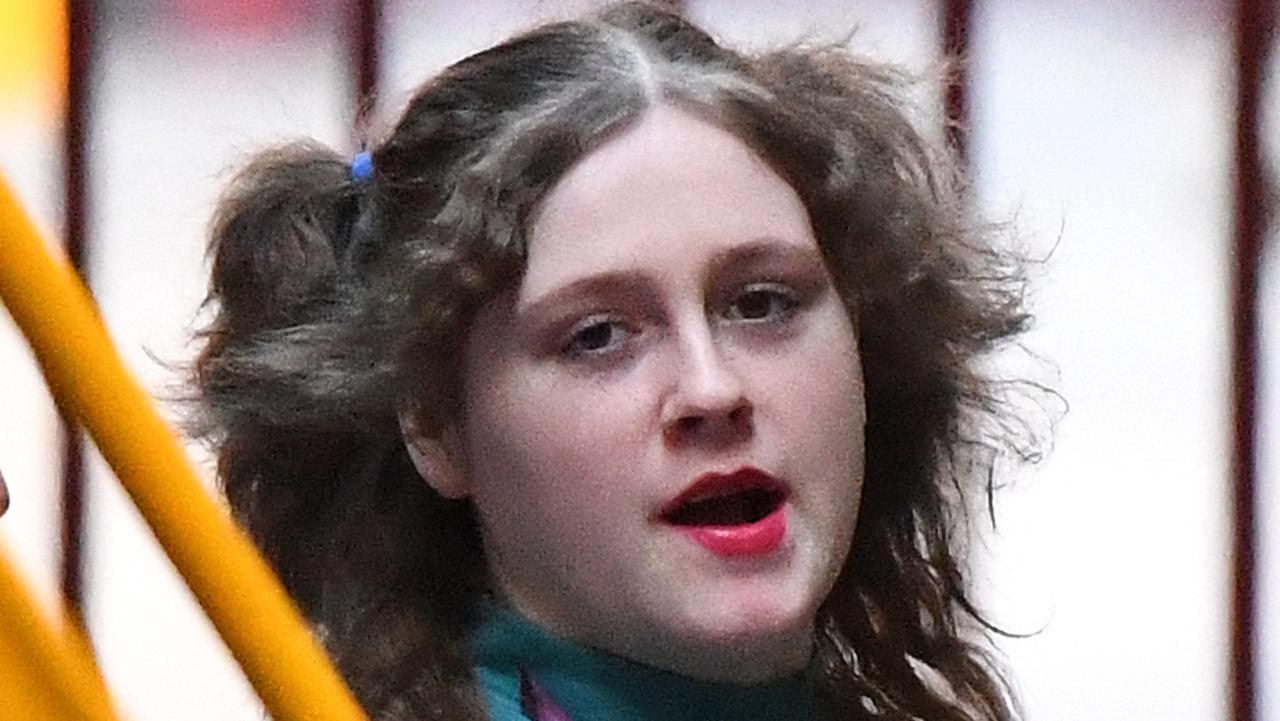World’s biggest ecstasy haul and the Australian Calabrian mafia in Keith Moor’s new book Busted
HERALD Sun Insight Editor Keith Moor’s fifth true crime book, Busted, released next week, reveals the inside story of the world’s biggest ecstasy haul and how the Australian Calabrian mafia nearly got away with it.
True Crime Scene
Don't miss out on the headlines from True Crime Scene. Followed categories will be added to My News.
Herald Sun Insight Editor Keith Moor’s fifth true crime book, Busted, is being released by Penguin next week.
It reveals the inside story of the world’s biggest ecstasy haul and how the Australian Calabrian mafia nearly got away with it.
This is an extract from it.
AS police involved in the world’s biggest ecstasy bust waited for the order to kick down the door they were as confident as they could be that those occupying the Carlton apartment would be asleep.
Those about to execute the raid had the element of surprise in their favour so meeting resistance was much less likely, which further boosted their confidence.
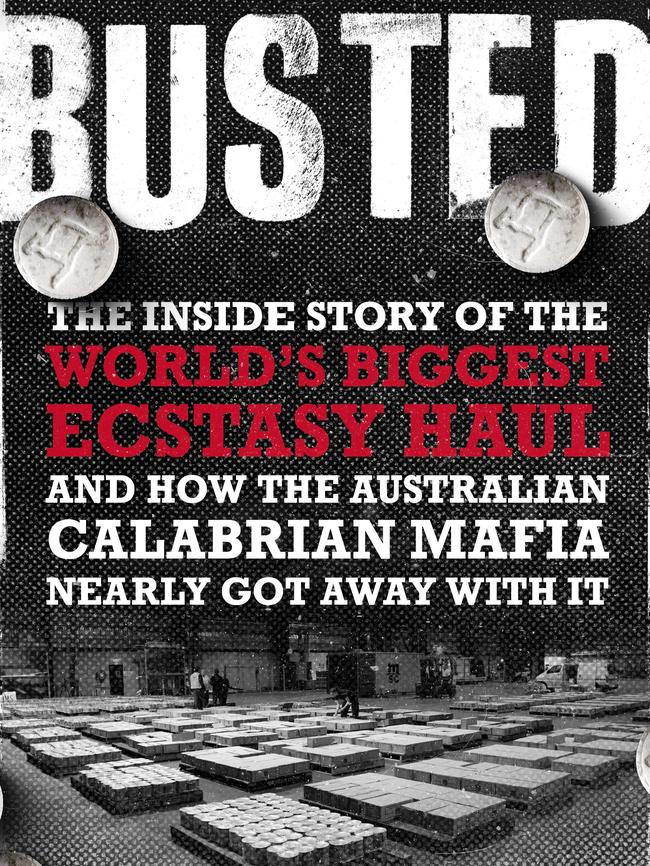
And they were aware from a major surveillance operation the day before that the five people inside had only been in bed for a few hours after hitting the bottle hard the previous night.
But Australian Federal Police bosses — who had had been waiting for more than a year to arrest those responsible for importing 4.4 tonnes of ecstasy into Melbourne — didn’t want to risk any of the suspects getting away, or their agents being harmed, so they brought in the big guns for the pre-dawn operation.
The apartment the AFP’s elite Operations Response Group (ORG) was preparing to raid was rented by Australian Calabrian Mafia boss Pasquale Barbaro for his Melbourne mistress, Sharon Ropa.
While Barbaro’s home was his mansion in Griffith, New South Wales, he spent a lot of time shacked up with Ropa in Victoria — unbeknown to his dutiful Italian wife and four children.
Heavily armed AFP agents threw in flash grenades, which set off loud bangs and flashes of light to mimic a hail of bullets, as they smashed their way into the Little Palmerston Street unit through the front and back doors about 4am — which must have done wonders for the hangovers those inside the flat were suffering after attending a funeral and the inevitable wake the night before.
One funeral goer, Aldo Taddeo, no doubt still regrets deciding to spend the night at Barbaro and Ropa’s place after the wake; he wasn’t wanted by police and no charges were laid against him.
Not only did he get the shock of his life when the flash grenades went off, but he got another form of shock when he struggled with police and was zapped with a stun gun to stop him wrestling with one of the AFP agents.

Another of those arrested in the love nest that day, Severino Scarponi, was so scared by the dramatic entrance of the AFP agents that he literally shat himself — a bad start to what became a very crap day for him.
Barbaro’s cousin Pasquale Sergi, who came down from Griffith for the Melbourne funeral, was also arrested during that early morning raid.
He tried to hide in a bedroom cupboard, which, strangely enough, didn’t fool the AFP agents responsible for searching and securing the premises.
Ropa was naked in bed with Barbaro in the master bedroom when AFP agents burst in. The shocked couple were ordered to lie on the floor.
Police raided Barbaro’s Griffith mansion at the same time as they were smashing their way into his love nest.
Ever tactful, officers who spoke to Barbaro’s wife in Griffith that day didn’t mention the naked circumstances of her husband’s arrest in Carlton.
The AFP agents who arrested Barbaro were surprised at how unflappable and calm he remained. Despite being dragged out of bed and his whole world crumbling around him, Barbaro even found time to flirt outrageously with one of the female AFP agents.
It’s difficult to imagine that little old Melbourne is where the world’s biggest ecstasy haul was made, but it’s true.
It’s also difficult to imagine there are still people in Australia who doubt the existence of the Calabrian Mafia here — but that’s true too.
I have had access to several confidential reports prepared by Australian and Italian law-enforcement agencies, ASIO spies and US Federal Bureau of Investigation agents that should convince even the most ardent of doubters that the Calabrian Mafia is a major organised crime player in Australia.
Those documents have never been released, but their contents are revealed in Busted and they paint a graphic picture of the history of the Calabrian Mafia in Australia.
Calabria is in the toe of southern Italy and is the world headquarters of the Italian organised crime gang, ’Ndrangheta.
’Ndrangheta is known by some Italians as L’Onorata Societa (the Honoured Society) or La Famiglia (The Family).
It is simply called the Mafia by most in Australia, or the Calabrian Mafia to differentiate it from the traditional Sicilian Mafia.
’Ndrangheta eclipsed the Sicilian Mafia in the late 1990s to become the most powerful crime syndicate in Italy.

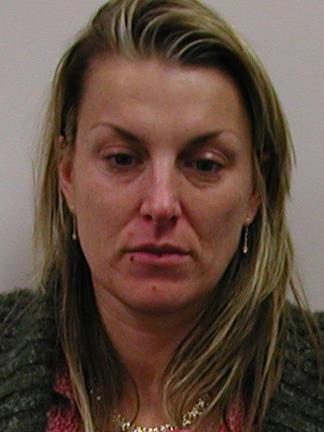
The Calabrian Mafia has a tight clan structure, often involving members marrying relations and sons taking over from ageing fathers to ‘keep it in the family’, which has made it difficult for law enforcement to penetrate.
The secret society has cells all over the world and has had a strong presence in Australia since at least the 1930s.
It is particularly prevalent in Melbourne, Mildura and Shepparton in Victoria, Griffith and Sydney in New South Wales, and Adelaide and Canberra.
It has been responsible for growing and distributing much of Australia’s marijuana for decades. It also got involved in heroin importations in 1979, through now-dead crime boss Robert Trimbole, and is known to have been involved in massive cocaine and ecstasy importations into Australia since at least 2000.
Just as it is important to have knowledge of the Calabrian Mafia to better understand the inside story of the world’s biggest ecstasy bust, it is equally important to know the backgrounds of the main players charged over the 4.4-tonne shipment.
Those players include Barbaro, Ropa, Saverio Zirilli, Rob Karam, John William, Samuel Higgs and Francesco Madafferi.
Easily the biggest of those players — and the undoubted leader of the gang responsible for importing tonnes of drugs into Australia — was Barbaro.
By the time of his 2008 arrest over the world’s biggest ecstasy bust, Barbaro was a senior Calabrian Mafia boss of international standing in the worldwide Italian secret society, and one of the biggest drug dealers Australia has ever produced.
It was Barbaro, through his senior role in the Calabrian Mafia, who had the international connections to give him access to tonnes of drugs through the Belgium-based Aquino Calabrian Mafia syndicate.
Barbaro was in regular contact with senior members of at least three of the world’s biggest international drug smuggling syndicates.
One of Barbaro’s contacts was an English criminal based in Asia who had strong connections to Chinese triad gangs; another was a Belgium-based Calabrian Mafia syndicate responsible for shipping tonnes of cocaine, ecstasy and other drugs around the world; and a third was a syndicate that specialised in making the world’s best-quality ecstasy in super labs near the Belgium — Netherlands border.
Each of the international syndicates also had something other than large scale drug dealing in common with Barbaro: a propensity to threaten and use violence.
Senior players in each of the three gangs treated Barbaro with incredible respect, a clear indication the international syndicate members considered Barbaro to be a major player on the world drug smuggling stage.
He was certainly one of their major drug-buying customers.
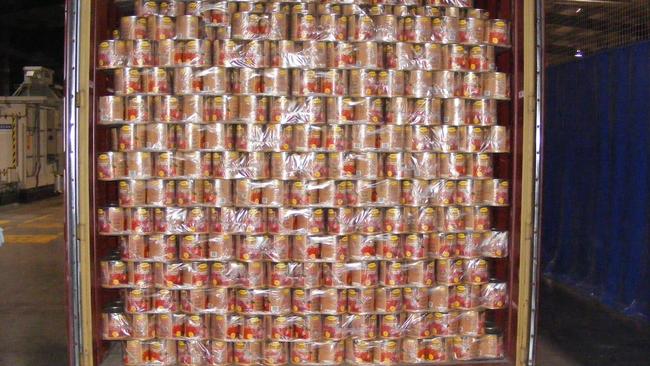

One of the Mr Bigs of international organised crime that Barbaro was dealing with was important enough to be picked up by a government-plated Porsche in Cambodia after meeting Barbaro, and was then afforded the luxury of a police motorcycle escort to take him to his next appointment.
Cambodian police surveillance officers were following Barbaro at the request of the AFP at the time.
Those Cambodian surveillance officers were stunned when the man left the meeting with Barbaro and stepped into the waiting Porsche.
The undercover cops watched as the Porsche, escorted by four police motorcycles, whisked the man away in style.
Such is the level of corruption in Cambodia that the AFP was never able to establish why Barbaro’s mate got such special treatment — but they suspect it was because the man was so big in organised crime that he was paying bent Cambodian officials for protection from prosecution.
The Cambodian surveillance officers were certainly not willing to pursue the matter beyond telling the AFP what they saw.
They did try to follow the speeding Porsche to see where it was going, but the police escort made it impossible for the undercover officers to keep up.
The Mr Big being given the chauffeur treatment is an old and very tall British crook who is known in the underworld by the nicknames ‘Long’ and ‘Stretch’.
AFP agents were able to establish his identity, but at the time of writing in 2016 neither they nor any other law-enforcement agency had been able to charge him with the international drug dealing and money laundering they know he is a major player in.
It was ‘Long’ that Barbaro used to launder the Calabrian Mafia’s drug money, with the cash making its way from Melbourne through Singapore and into Europe. Although Long is known to move around the world using false passports under various aliases, including the surname Sampson, he was based in Singapore during most of Barbaro’s dealings with him, and it was from Singapore that Long flew in for his Cambodia meeting with Barbaro.
The AFP discovered that 2008 meeting between Barbaro and Long in Cambodia was so Barbaro could ask Long for help in buying container loads of the chemical piperonyl methyl ketone (PMK), which is a favoured chemical used in the ecstasy-manufacturing process.
Organised crime had been getting most of its PMK from China, but the supply had dried up at the time of Barbaro’s 2008 meeting in Cambodia with Long.
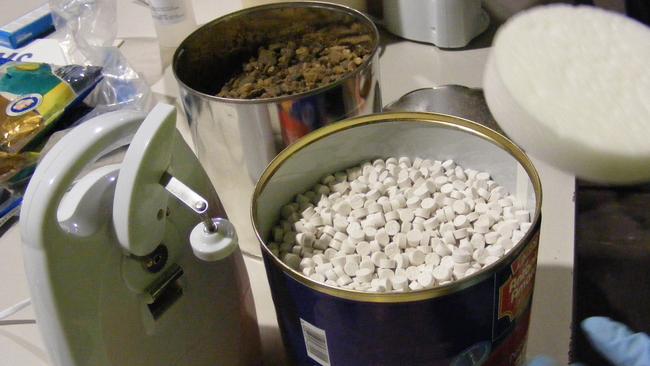
The shortage of PMK was largely due to a crackdown on the illegal PMK trade by the Chinese government in the months leading up to the 2008 summer Olympics in Beijing.
The Chinese authorities were determined not to have any bad press during the Olympics and put enormous resources into stemming organised crime activity.
That left major drug dealers like the Calabrian Mafia having to search for new supplies of the chemicals needed to make ecstasy and other drugs for the European and Australian markets.
Barbaro believed, quite rightly, that Long would have the necessary contacts to get such chemicals.
The AFP knew — because it had been bugging and following Barbaro for months — that Barbaro was planning a number of major drug importations to get money to make up for what he lost when the AFP seized his 4.4-tonne ecstasy shipment in Melbourne in 2007.
He needed to make $10 million to compensate the Belgium-based Calabrian Mafia cell that had paid for the 4.4 tonnes of ecstasy, but Barbaro was also keen to keep drug dealing to make more than just the $10 million he owed to the Europeans.
Drug dealing was his main source of income — and he had expensive tastes, as well as a wife and family and at least one mistress to support.
Although the AFP had been gathering evidence against Barbaro and his gang since the 4.4 tonnes of ecstasy was seized in June 2007, it was holding off on making arrests following that 2007 seizure because bugged conversations and other intelligence led them to believe Barbaro was well advanced in plans for several more major drug importations to Australia.
That is why the AFP arranged for police in Cambodia, as well as police in various parts of Europe, to secretly follow Barbaro during his overseas trips.
After the June 2007 ecstasy seizure, but well before the August 2008 arrests of Barbaro and his crew, the AFP sent agents to Italy, Belgium and the Netherlands to pass on information to police there about the people in Europe that Barbaro was dealing with.

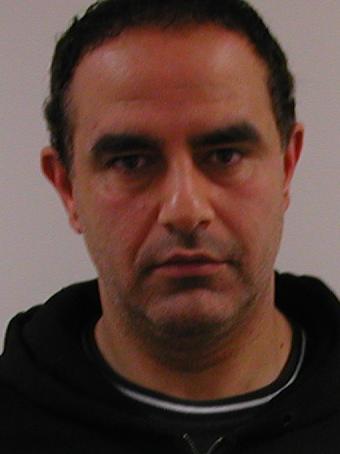
The AFP also wanted to alert the European agencies that it appeared Barbaro and his European Calabrian Mafia contacts were well advanced with plans for another major shipment of ecstasy from the Belgium — Netherlands border region to Melbourne via Italy.
While the Italian police were not obstructive, they didn’t mount a full-scale investigation into the European end of the world’s biggest ecstasy bust, because all the available evidence pointed to Italy just being where the ecstasy pills were shipped from that time, and would probably also be just the shipping point for future container loads of drugs.
The Dutch and Belgian police were much more interested in the information the AFP had about where the ecstasy that found its way to Australia in tomato tins was made, who made it and who paid for it to be made and shipped to Melbourne.
That information was that the Belgium-based Calabrian Mafia Aquino family clan ordered and paid for the 4.4 tonnes of ecstasy and arranged to take it by truck from the Belgium — Netherlands border region to Naples in Italy for shipment to Melbourne, and that ecstasy making Mr Big Adrianus ‘Janus’ Van Wesenbeeck manufactured the ecstasy for the Aquino clan.
Van Wesenbeeck is considered by international law enforcement agencies to have been one of the biggest drug manufacturers and traffickers in the world, and the Aquino syndicate was one of the world’s biggest buyers and smugglers of drugs until several senior members of it were arrested in recent years.
Police linked the Aquino syndicate to the importation of 2.5 tonnes of cocaine to Europe in 2011.
The Aquino family is originally from the town of Torano Castello, which is in the Calabrian province of Cosenza in southern Italy — a hotbed of ’Ndrangheta activity. Some Aquino family members moved to Maasmechelen, in the Belgian province of Limburg on the border between Belgium and the Netherlands.
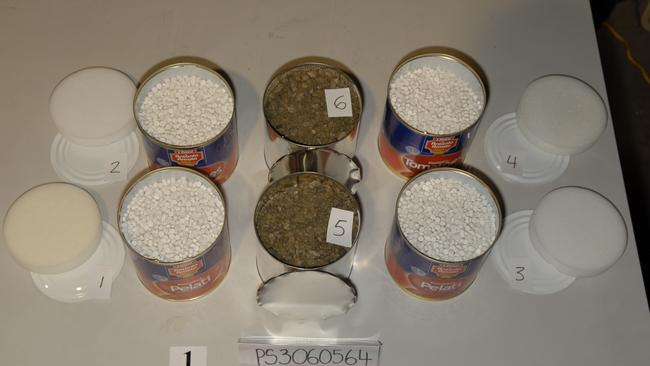

At the time of writing in 2016, several members of the notorious Aquino clan were facing trial over drug charges, with allegations made in court that since September 2012 the Aquino family had organised at least five cocaine shipments from South America to Europe for distribution in Belgium, the Netherlands and the United Kingdom.
A senior member of the syndicate, Silvio Aquino, was one of those arrested in Europe for his role in helping to organise the 4.4-tonne shipment of ecstasy to the Pasquale Barbaro gang in Melbourne in 2007.
A Belgian court jailed him for four years on 21 March 2014, for his role in the shipment to Australia.
Aquino was murdered on 27 August 2015 in Limburg; his attackers ambushed the car he and his wife were in and shot him in the head.
Convicted alongside Aquino for his role in the 4.4-tonne ecstasy shipment to Australia was Sinan ‘The Turk’ Unlu, who was also jailed for four years.
The Calabrian Mafia established cells near the Belgium — Netherlands border decades ago because it knew the area was where those with the expertise to manufacture high-quality ecstasy operated.
It is where Unlu and Silvio Aquino had their base, and from where they organised ecstasy shipments to Barbaro after paying the Van Wesenbeeck syndicate to make the pills.
Those expert ecstasy makers had developed the skills and contacts needed to quickly set up super labs in warehouses and other buildings where they could churn out tonnes of pills before moving to another clandestine lab to try to stay one step ahead of law enforcement.
At the time of writing in 2016, that Belgium — Netherlands border region was still the area where much of the world’s most pure ecstasy tablets were being made.
The Aquino and Van Wesenbeeck syndicates had long been targets of Belgian and Dutch police and at the time the AFP came calling for help in 2008, the Belgians already had undercover operatives who had infiltrated the Aquino gang.
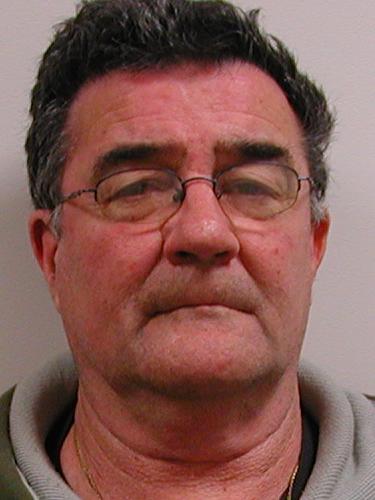
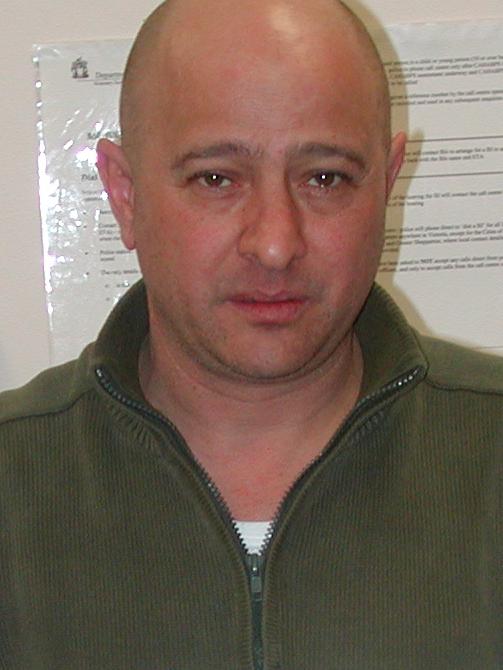
Those undercover officers had gathered incriminating evidence of massive cocaine and ecstasy dealing by the Aquino crime family.
Detectives from the AFP and Belgian and Dutch police forces agreed to share evidence and intelligence about those involved in the 4.4-tonne ecstasy shipment to Australia, as well as crimes committed by syndicate members following the seizure of the 15 million pills.
Those investigations eventually led to thirty-three arrests in Australia and twenty-seven in Belgium.
The Belgians were particular pleased to be able to charge members of the Aquino crime syndicate, as well as Van Wesenbeeck and some of his syndicate.
Evidence suggests the Aquino Calabrian Mafia clan had been ordering tonnes of ecstasy pills from the Van Wesenbeeck syndicate for several years and that the Van Wesenbeeck syndicate had been setting up temporary ecstasy super labs near the Belgium — Netherlands border in order to meet the demand.
Police intelligence files show Van Wesenbeeck used to be a scrapmetal dealer near the Belgium — Netherlands border before he started smuggling marijuana from the Netherlands to elsewhere in Europe in the early 1990s, usually hidden in camper vans and caravans.
That mobile home smuggling trade grew over the years and made Van Wesenbeeck rich enough to enable him to expand into the ecstasy making business, which led to his association with the Aquino-led Calabrian Mafia cell in Belgium and the Barbaro-led Calabrian Mafia cell in Australia.
Van Wesenbeeck and Aquino clan members have strong connections to Australia, with Barbaro being in regular contact with the Aquinos, and Van Wesenbeeck having been linked to a previous ecstasy importation to Sydney, as well as later shipments that went to Barbaro.
The AFP has also been told Van Wesenbeeck used some of the proceeds of his drug crimes to invest heavily in property in Australia, but at the time of writing in 2016 it had not been able to identify any of the properties he allegedly bought.
Dutch-born Van Wesenbeeck also owns a winery and property in South Africa, as well as the mansion in Lommel, Belgium, where he was living at the time of his 2009 arrest over his large-scale drug manufacturing and dealing.
He also bought the villa next door to his Lommel mansion, apparently attracted by the well-equipped zoo that came with it.
Police arrested Van Wesenbeeck and some of his gang at a campsite in 2009, where they had gathered for a summer barbecue, and seized drugs worth €40 million during raids on Van Wesenbeeck properties.
Van Wesenbeeck was jailed for ten years in March 2011 after those raids.
A Belgian court sentenced him to a further six years in 2012 over an ecstasy shipment of 860000 pills to Australia. He was released on parole in June 2015.
Although the AFP was not able to prove beyond reasonable doubt where the ecstasy seized during the world’s biggest ecstasy bust was packed into tomato tins and how it got from Van Wesenbeeck’s super lab on the Belgium — Netherlands border to Naples, information gained after the event, from informers and elsewhere, strongly suggested the tablets were packed in a Calabrian Mafia — owned cannery in Belgium and then driven by truck from Belgium to Naples.
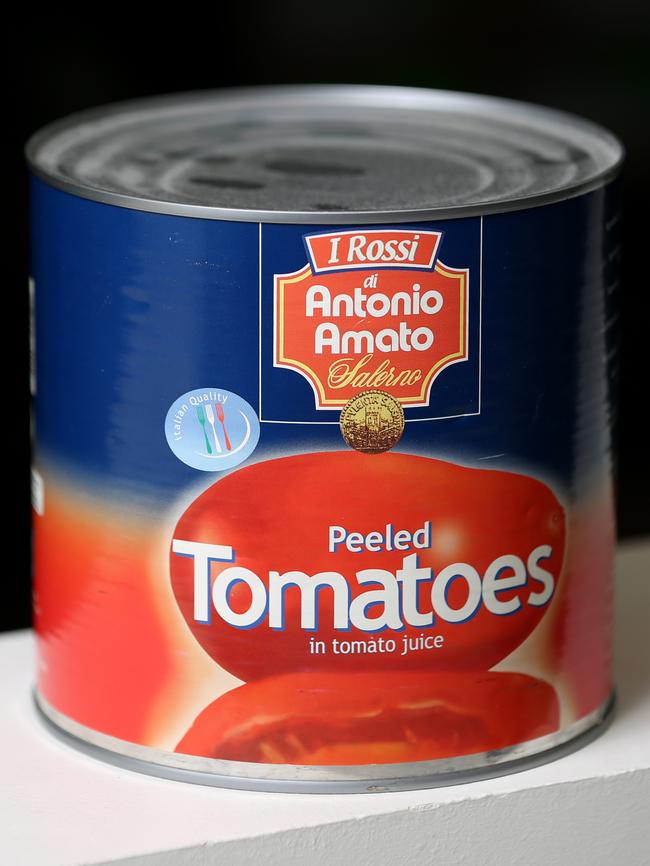

Calabrian Mafia cells around the world — including in Australia — have become masters at establishing legitimate businesses to both make legitimate money and turn black money into white by laundering it through those legitimate businesses.
Many of those legitimate businesses around the world are in the food industry, the lucrative fruit and vegetable trade in particular.
While not able to prove it, the AFP and Belgian detectives presume the Aquino clan either owns or has access to a legitimate canning company near the Belgium — Netherlands border and that a canning machine and production line in that canning factory was used to professionally pack and seal the ecstasy pills in the tomato tins that ended up being seized in Melbourne.
Hiding ecstasy pills in tomato tins was a logical choice for the Calabrian Mafia as millions of such tins get exported from Italy to ports around the world every year — and drug smugglers obviously want as little attention as possible paid to whatever they are hiding their drugs in.
Police were told the tins containing the pills were then driven by truck on the 1730-kilometre journey from Belgium through Germany, Switzerland and Italy to the Italian port of Naples, to be loaded on a ship bound for Melbourne.
Detectives were also told traffic police actually stopped the truck en route because it appeared to be overloaded, but the driver was allowed to continue after a warning.
So professionally packed were the drugs that there was nothing to alert the traffic police who inspected the load that it was anything other than tomatoes, which is what the genuine labels on the genuine tins said was inside the tins.
It worked out for the best that the AFP in Melbourne, rather than by two traffic cops in Europe, made the world’s biggest ecstasy bust, because it was the seizing of it in Australia that led to the dismantling of the Australian and European ends of what was an international drug-smuggling ring.
It is likely that if the two traffic cops had stumbled on the ecstasy after routinely stopping the truck for a traffic infringement, the only arrest could well have been just the lowly truck driver.
The truck driver would almost certainly have been too scared to inform on those who put the pills in his truck.
He would also have been so far down the hierarchical structure of the syndicate that he would have had no idea who the organisers, manufacturers and financiers were.
Busted: The Inside Story of the World’s Biggest Ecstasy Haul and How the Australian Calabrian Mafia Nearly Got Away With It by Keith Moor, published by Penguin, rrp $35
READER OFFER
Buy Busted by Keith Moor for $33 including delivery.
Order online at heraldsun.com.au/shop or call 1300 306 107. For mail order, post a cheque/money order to: Herald Sun Book Offers, PO Box 14730, Melbourne VIC 8001

